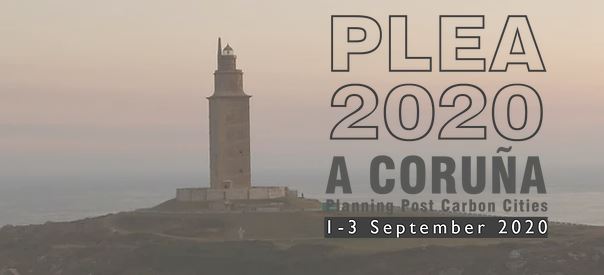PLEA, one of the most important conferences in the field of sustainable Architecture and Urban Design, took place last week virtually for the first time in its 35 versions. This year, the discussion was centred on the theme “Planning Post Carbon Cites” and convoked academics from more than 40 countries.
The keynote speakers consisted of worldwide known Planning Advisers, Urban and Building Developers and Architects. One iterative reflection among them (that caught my attention!) was the importance of including human behaviour, user perception and community engagement into the design process. Helle Søholt (Gehl) highlighted that one of the main barriers in urban development is passing from working in ‘silos’ to implementing a holistic approach. This means integrating different scales and generating links with other fields (e.g. urban planning + transport + policies + health).
We presented the paper “Decarbonising Our Transport System: Vehicle Use Behaviour Analysis to Assess the Potential of Transitioning to Electric Mobility”. In this article, we reported the study conducted to a fleet of 49 vehicles used in a university campus, to assess the potential of transitioning to electric vehicles (EVs). The study included reviewing the travel patterns and the required capacity of the vehicles (range anxiety), location and feasibility of the charging infrastructure, and compatibility of the fleet with vehicle to grid (V2G).
The analysis showed that almost all of the time (96% to 99.8%) the pattern of use of these vehicles would fit within the current range of capacity of EVs. The stationary time analysis showed that most of the vehicles remained parking overnight (+10 hours) (see figure below) and, during daytime, the vehicles were not used simultaneously, which is a convenient scenario to integrate V2G and renewable energy from photovoltaics. Additionally, we performed a vehicle-parking location analysis, to identify possible locations for charging infrastructure. We also found a potential reduction on CO2 emissions up to 80% if the fossil-fuelled vehicles were replaced by EVs. Moreover, this reduction will increase if the energy from the grid is decarbonised with the support of V2G.

Connecting with the message from Helle Søholt, I consider that the pathway to plan post carbon cities would require a transversal work between traditional ‘silos’, for instance, the integration of two different but compatible systems: vehicles and the energy grid. The cities have been traditionally designed as passive receptors, consumers of natural resources and not self-sufficient. Therefore, we urgently require activating the bi-directional capacities of building and vehicles to generate, store, share and distribute energy, in order to optimise both systems.
It was a great virtual conference organised by the University of A Coruña. The link to access the full paper will be published shortly here.
Blog by Dr Julie Waldron, Research Fellow from the Buildings, Energy and Environment Research Group, University of Nottingham
The Project EV-elocity is part of the Vehicle-to-Grid (V2G) competition, funded by the Department for Business Energy and Industrial Strategy (BEIS) and the Office for Low Emission Vehicles (OLEV), in partnership with Innovate UK, part of UK Research and Innovation.
In January 2018, OLEV and BEIS announced that 21 projects (8 feasibility studies, 5 collaborative research and development projects, and 8 real-world v2g trial projects) were to receive funding of £30m to develop the business proposition and the core technology to support Vehicle 2 Grid deployment in the UK, including its demonstration with large scale trials.
The projects involve more than 50 industrial partners and research organisations from both the Energy and Automotive sector, marking the largest and most diverse activities on V2G in the world, and trialling more than 1,000 vehicles and V2G charger units across UK.
The V2G projects represent a significant step towards the transition to a low carbon transportation and a smart energy system. Allowing EVs to return energy to the Power Grid when parked and plugged for charging, will increase Grid resilience, allow for better exploitation of renewable sources and lower the cost of ownership for EV owners, leading to new business opportunities and clear advantages for EV users and energy consumers.


